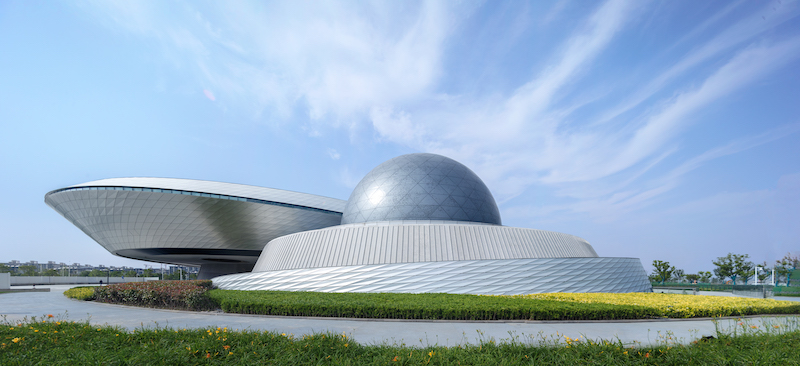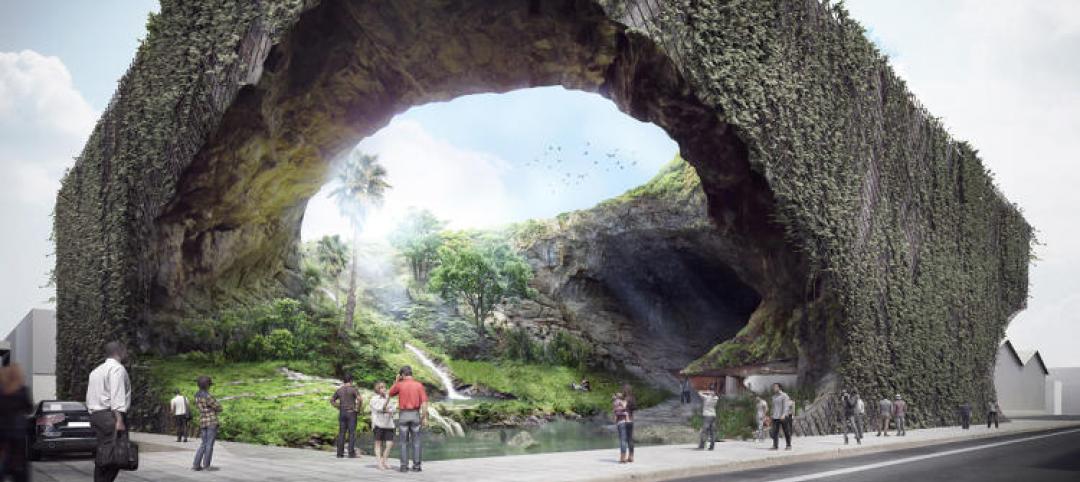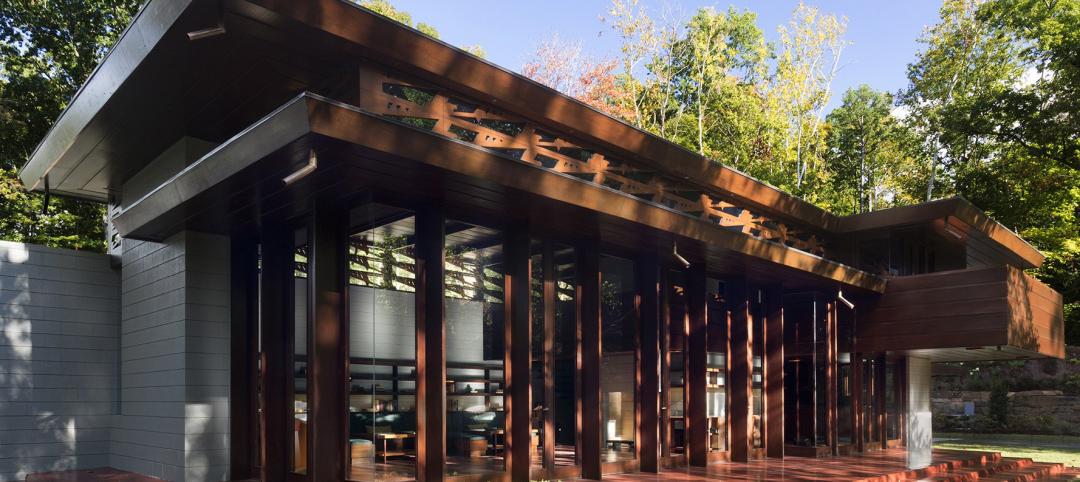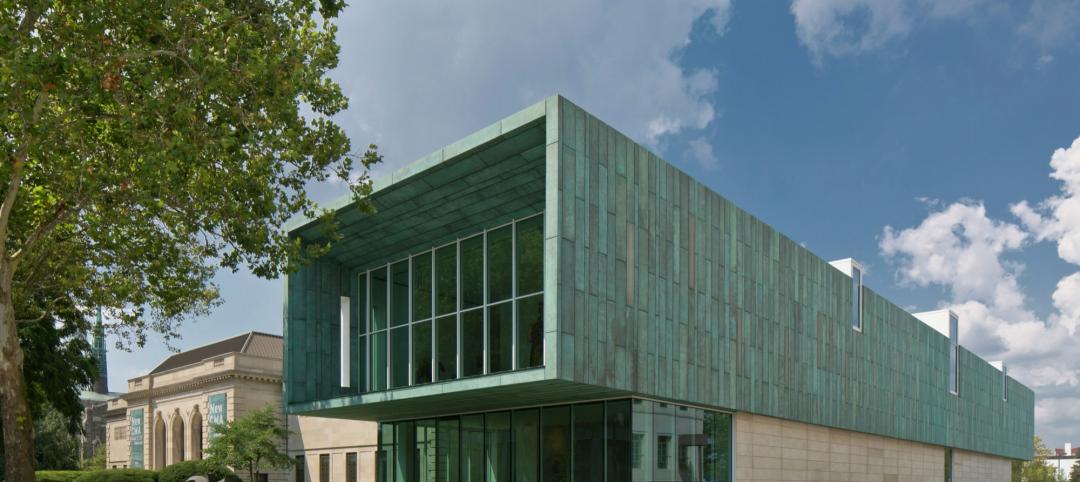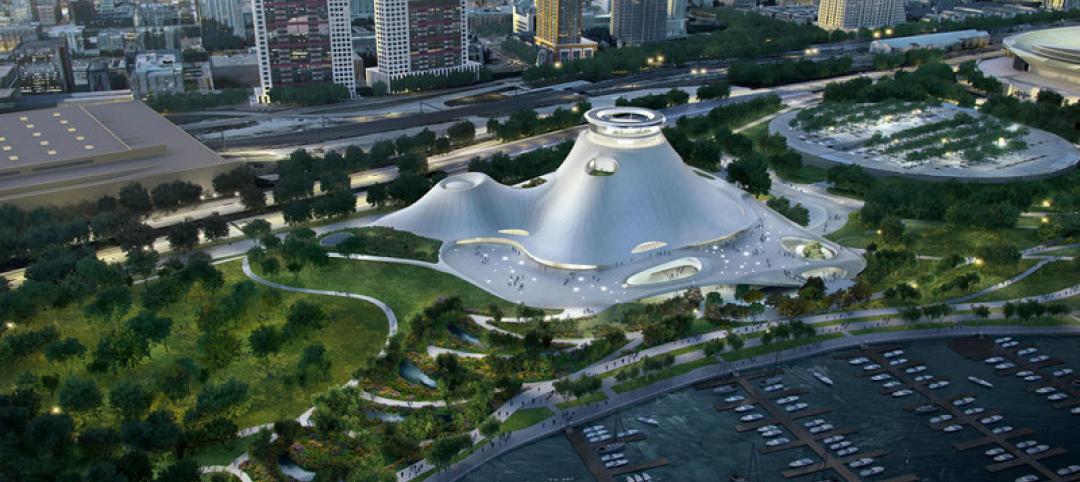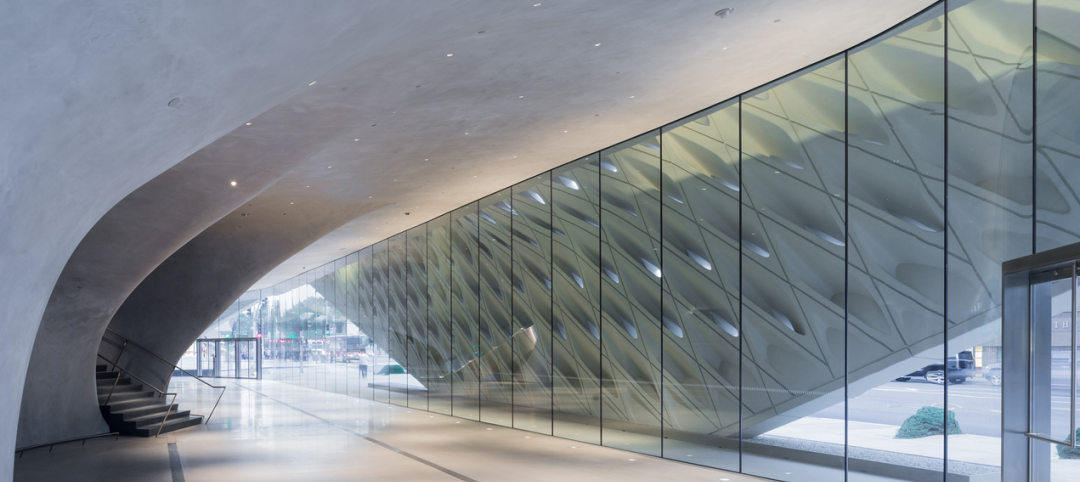The recently completed 420,000-sf Shanghai Astronomy Museum is set to open on July 18. The new astronomical branch of the Shanghai Science and Technology Museum is the largest museum in the world solely dedicated to the study of astronomy.
The building does not include any straight lines or right angles as a nod to the geometry of the universe and the dynamic energy of celestial movement. Design inspiration was drawn from the “three-body problem” in physics, which looks to the intricate choreographies created by gravitational attraction of multiple bodies within solar systems.
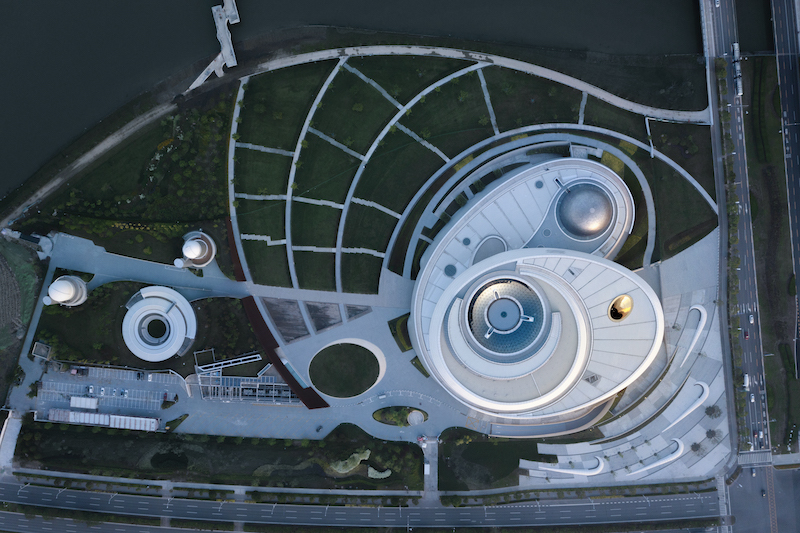
The building’s envelope traces a series of arcing paths that are influenced by gravitational pull: the heart of the central atrium, the forward momentum at the entry, and the planet-like sphere that envelopes the planetarium theater. Additionally, the museum’s three principal architectural components, the Oculus, the Inverted Dome, and the Sphere, act as functioning astronomical instruments that track the sun, moon, and stars.
The Oculus is suspended over the museum’s main entry and demonstrates the passage of time by tracking a circle of sunlight on the ground across the entry plaza and reflecting pool. The Sphere houses the planetarium theater, which is half submerged in the building. The Sphere derives its shape from the programmatic element it contains, but also from an abstract manifestation of a primary celestial form. With minimal visible support, the Sphere evokes an illusion of weightlessness and anti-gravity. The Inverted Dome is a large, inverted glass tension structure that sits on top of the central atrium at the roof line. Visitors will have the ability to occupy the center of the glass dish with an unimpeded view of the sky. The Inverted Dome acts as the culmination of the exhibit journey. A 720-degree spiraling ramp inside the museum and underneath the Inverted Dome traces the orbital flow of the visitor sequence throughout the museum exhibits and draws the eye upward to its apex.
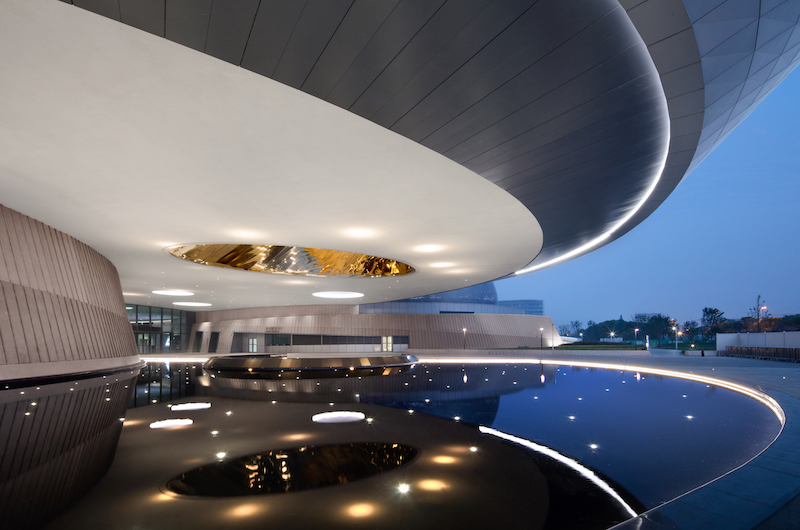
The museum grounds include buildings and programming such as temporary and permanent exhibits, a 78-foot solar telescope, an observatory, an optical Planetarium, an Education and Research Center, and a Digital Sky Theater. Programming at the museum will feature immersive environments, artifacts and instruments of space exploration, and educational exhibits.
A ceremony to celebrate the museum’s opening will be held on July 17.
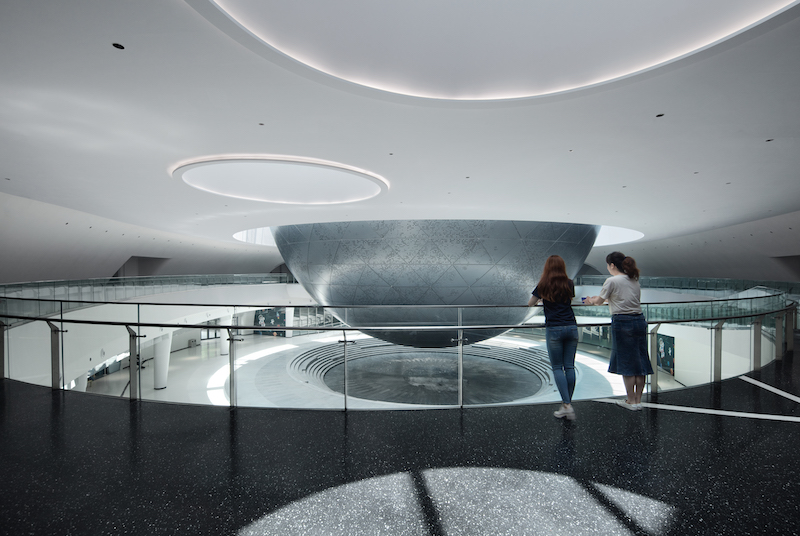
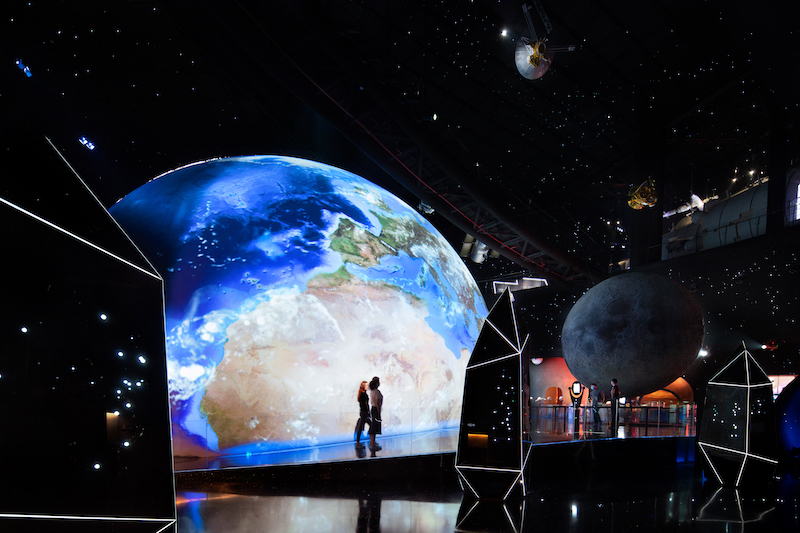
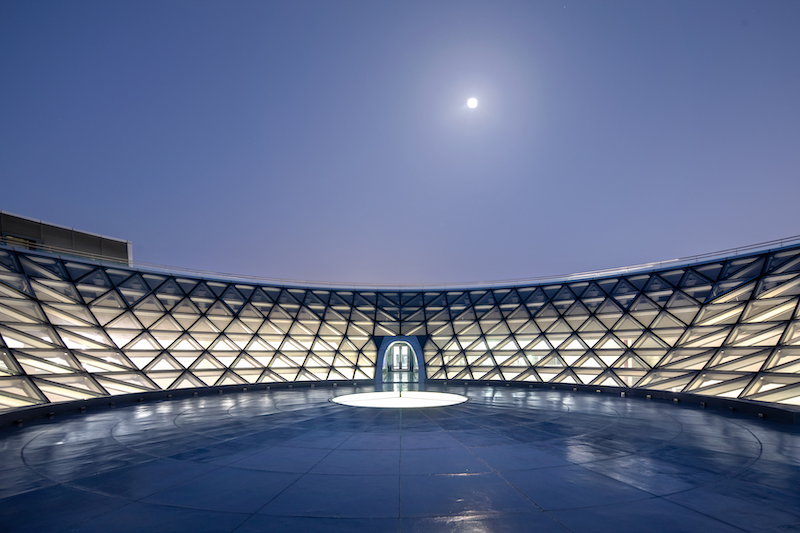
Related Stories
Museums | Nov 4, 2015
George Lucas museum design by MAD Architects finally gets green light
The project will go ahead with its revised, smaller-scale design.
Museums | Oct 22, 2015
Kengo Kuma’s design for cultural museum in the Philippines evokes prehistoric cave feel
The Museum of Indigenous Knowledge in Manila, will house over 4,000 years of history.
Museums | Oct 20, 2015
Frank Lloyd Wright’s Bachman Wilson House finds new home at Arkansas museum
Crystal Bridges Museum reconstructed the 61-year-old Usonian house and will open it to the public in November.
Museums | Oct 16, 2015
Renzo Piano will turn century-old Moscow power plant into art gallery
The idea is to take the GES2 power station, which was built between 1904 and 1907, and turn it into an exhibition space for the V-A-C Foundation, a Russian art organization.
Museums | Oct 6, 2015
Columbus Museum of Art to open new wing at month's end
Created by the DesignGroup, the Margaret M. Walter Wing is part of a $36.7 million renovation project.
Museums | Sep 29, 2015
Designs unveiled for Warsaw Art Museum and Theatre
Emphasizing the building’s role in the public sphere, the museum will be accessible from all sides.
Museums | Sep 22, 2015
David Adjaye releases plans for Ruby City art gallery in San Antonio
San Antonio's Ruby City will hold 800 works of art in 10,000 sf of exhibition space.
Museums | Sep 21, 2015
Ma Yansong and Jeanne Gang revise Chicago lakefront Lucas Museum
New renderings of the proposed Lucas Museum show a scaled-down building on more green space.
Museums | Sep 16, 2015
First look: Diller Scofidio + Renfro's The Broad museum in Los Angeles
LA's newest art museum combines gallery space and collection storage based around two design concepts: the veil and the vault.
Museums | Sep 9, 2015
Bauhaus Museum Dessau names two design winners
The German museum chose one sleek, no-nonsense concept and one colorful, complex entry.


